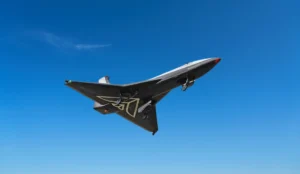Remembering 9/11: The Day That Changed Aviation Security Globally
On September 11, 2001, the world witnessed one of the most devastating terrorist attacks in modern history, forever altering the landscape of aviation security. Nineteen hijackers, affiliated with the extremist group al-Qaeda, executed a coordinated assault using four commercial aircraft, crashing them into the World Trade Center in New York City, the Pentagon in Washington, D.C., and a field in Pennsylvania after passengers attempted to retake control of the fourth plane. The attacks claimed nearly 3,000 lives and marked a turning point in global security policies, particularly in the aviation industry.
Image Source: ABC News
Pre-9/11 Aviation Security
Prior to 9/11, airport security was less stringent. Metal detectors, X-ray machines, and random baggage checks were the norm, but they were largely perceived as routine procedures meant to deter low-level threats. Cockpits were easily accessible, with only basic locks, and airlines focused more on passenger convenience than potential security breaches. This laxity allowed the hijackers to exploit vulnerabilities, bypassing the minimal checks in place and successfully weaponizing commercial airplanes.
The Immediate Aftermath: Grounding of Flights
In the immediate aftermath of the attacks, the entire U.S. airspace was shut down for the first time in history, grounding over 4,000 flights. This unprecedented action reflected the chaos and fear that enveloped not only the United States but the entire world. Governments quickly realized that aviation security needed a complete overhaul to prevent future tragedies.
The Birth of the Transportation Security Administration (TSA)
One of the most significant changes in aviation security post-9/11 was the establishment of the Transportation Security Administration (TSA) in the U.S. in November 2001. Tasked with overseeing security for all modes of transportation, TSA became the face of enhanced airport security. Strict measures were implemented, including advanced screening techniques, background checks for airport employees, and the federalization of security personnel.
The TSA introduced stricter screening of passengers and carry-on items, banning sharp objects like box cutters, which were used by the 9/11 hijackers. Liquids and gels were later restricted following a 2006 plot to detonate liquid explosives aboard transatlantic flights. In addition, pat-downs, full-body scanners, and random secondary screenings became standard procedures, significantly increasing security but also adding time and inconvenience for travelers.
Strengthening Cockpit Security
One of the most notable changes following the 9/11 attacks was the reinforcement of cockpit doors. Cockpit doors on all commercial aircraft were required to be bulletproof and lockable, with access limited to authorized personnel. This measure ensured that potential hijackers would no longer have easy access to pilots, reducing the risk of aircraft being turned into weapons.

International Aviation Security Response
The impact of 9/11 was not confined to the United States. The International Civil Aviation Organization (ICAO) led global efforts to strengthen security standards across member states. Countries adopted new aviation security protocols, including passenger identity verification, biometric systems, and enhanced screening technology. The International Air Transport Association (IATA) also played a crucial role in unifying global aviation security standards.
Many airports worldwide introduced pre-flight passenger screening programs, often requiring travelers to undergo additional scrutiny for international flights. The sharing of intelligence between nations improved, and agencies like INTERPOL played a vital role in tracking suspected terrorists and securing borders.
The Introduction of No-Fly Lists and Air Marshal Programs
In response to the increased threat of hijackings, many countries, including the U.S., introduced no-fly lists. These lists, managed by security agencies, identified individuals deemed to pose a threat to civil aviation and banned them from boarding flights. This became a key tool in preventing known or suspected terrorists from gaining access to commercial airliners.
Additionally, the deployment of air marshals—armed officers disguised as passengers—became a critical component of aviation security. Their presence aboard aircraft served as a deterrent to potential attackers and provided an additional layer of in-flight security.
Global Surveillance and Data Sharing
Another significant change was the development of Passenger Name Record (PNR) systems, which allowed airlines to share passenger data with security agencies before flights departed. This proactive approach enabled authorities to identify potential risks and prevent individuals of concern from boarding planes. Data-sharing agreements between countries also grew, allowing for more effective monitoring of travelers.
Technological Innovations in Security
In the years since 9/11, advancements in technology have played a vital role in enhancing aviation security. Biometric systems, such as facial recognition and fingerprint scanning, are now commonplace in many airports, ensuring that passenger identities are verified with greater accuracy. Advanced imaging technology and explosive trace detection have improved the ability to identify concealed threats.
Furthermore, the introduction of programs like PreCheck in the U.S. and similar programs worldwide allows for pre-vetted, low-risk passengers to undergo expedited screening, reducing wait times while maintaining high security standards.
Balancing Security and Passenger Experience
While the post-9/11 world demanded tighter security, it also raised concerns about privacy and civil liberties. Critics argued that certain measures, such as invasive searches and increased surveillance, infringed on personal freedoms. Airlines and airports faced the challenge of balancing the need for heightened security with providing a seamless travel experience.
Over the years, aviation authorities have worked to strike this balance, improving the efficiency of security procedures while maintaining rigorous checks. Trusted traveler programs, biometric screenings, and automated security lanes have helped reduce congestion while ensuring safety.
The Legacy of 9/11 in Aviation Security
Today, the legacy of 9/11 is deeply embedded in every aspect of aviation security. From reinforced cockpit doors to advanced passenger screening systems, the aviation industry has undergone a seismic transformation in response to the vulnerabilities exposed by the attacks. While air travel remains a popular mode of transportation, the post-9/11 era serves as a constant reminder of the ongoing threat posed by terrorism.
The attacks of September 11, 2001, not only reshaped aviation security but also transformed global approaches to counterterrorism. Governments, aviation authorities, and airlines continue to collaborate closely, investing in the latest technologies and intelligence-sharing networks to stay ahead of evolving threats.
As we reflect on the events of that fateful day, we honor the lives lost and remain vigilant in our commitment to ensuring the safety and security of the skies. The lessons learned from 9/11 have undoubtedly made air travel safer, but they have also underscored the need for constant adaptation in the face of new challenges.

